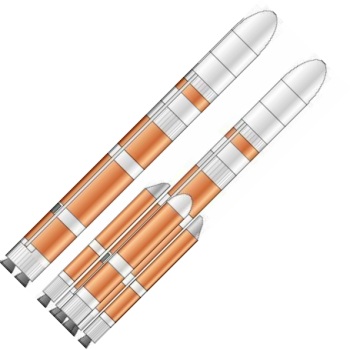To: RightWhale
This is a picture of one of the boosters they refer to in this article:

The CZ-5-5.0 heavy launcher would use the 5.0 m core stage together with a number of modular 2.25 m or 3.35 m diameter stages as strap-ons. Maximum payload with four 3.35 m diameter strap-ons is given as 23 tonnes to low earth orbit or 11 tonnes to geosynchronous transfer orbit. Lower payloads could be achieved by using 2 x 2.25 m plus 2 x 3.35 m strap-on stages; four x 2.25 m strap-on stages, or two of either stage. Growth to 40 tonnes payload would be possible if eight 3.35 m strap-ons could be used. The CZ-5 core stage is similar in dimensions and mass to the Ariane 5 core, but powered by four engines instead of the single engine used in Ariane.
CZ-5-5.0
25 posted on
03/15/2002 5:51:46 PM PST by
Brett66
To: Brett66
That seems to be the way to go for modern boosters. Develop a core that is reliable and relatively inexpensive and relatively efficient. Then have flexibility in strap-ons, as well as upper stages. The "most efficient motor" in the world is a Russian design, and is used on the new Atlas. Where Atlas used to have 3 motors on lift off and dropped 2 after it got underway, they now have 2 all the way, and that rocket moves out, nothing slow about it. The move to hydrogen and LOX for the main stage is highly efficient, as well as environmentally friendly. They can burn kerosine in the upper stage since that happens above most of the atmosphere. Top stage can be any fuel they want, hypergolic possibly so it is easy to start and stop.
FreeRepublic.com is powered by software copyright 2000-2008 John Robinson
